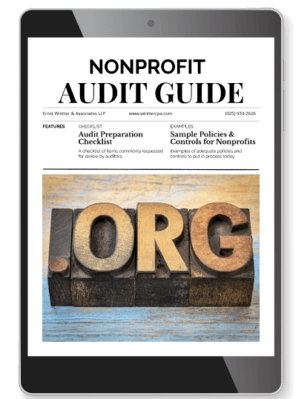New FASB Standards Recognizing Revenue
This past August (2017), the Financial Accounting Standards Board (FASB) issued a proposed Accounting Standards Update (ASU) to address concerns raised by stakeholders regarding the recognition of revenue from contracts and grants received by nonprofit entities. The stakeholders raised concerns regarding the diverse sources of grants and contracts that nonprofit organizations receive which contributes to the difficulty in recognizing revenue on a timely basis. Master Finances: Nonprofit accounting for contributions. Insights for accurate reporting, compliance, and financial transparency, ensuring mission success.
Nonprofit Challenges to Recording and Recognizing Revenue on a Timely Basis
Recognizing and recording revenue for a nonprofit may be challenging because it requires the nonprofit to classify revenue as a contribution or exchange transaction. The new changes proposed by the Accounting Standards Board will assist nonprofits in distinguishing between reciprocal (exchange transactions) and non-reciprocal (contributions) and also between conditional and unconditional contributions.
Distinguishing Revenue
Exchange vs. Contribution
A grant is classified as an exchange if there is an expected exchange between the nonprofit and the grantor. The consideration from the exchange must hold value to the grantor.
Exchange Example: J. Paul Getty grants his collection of artwork to the City of Los Angeles in exchange for advertising and media rights, the grant would be considered an exchange rather than a contribution because the media rights are valuable to J. Paul Getty.
Contribution Example: Corporation X gives $20,000 to a local nonprofit for the benefit of the general public. This would be considered a contribution because there is no expected exchange of consideration of monetary value.
Conditional vs. Unconditional Contributions
If a nonprofit determines a grant is a contribution, then it must ascertain if the contribution is conditional or unconditional. A contribution is conditional if:
- The condition is a barrier to using the grant and includes, either:
- A right of release of the grantor to her obligation to contribute the promise,
- or a right of return.
Unconditional Contribution Example: J. Paul Getty gifts his art collection and museum in perpetuity to the City so long as the City establishes an education center within the museum. The establishment of an education center is a condition that is a “barrier to using the grant.” However, there is no right of release nor a right of return; therefore, it is not a condition for purposes of reporting contributions.
Conditional Contribution Example: J. Paul Getty gifts his art collection and museum in perpetuity to the City so long as the City establishes an education center within the museum. There is also an additional clause that the collection and museum would revert to the Getty Trust if the City fails to meet the condition (i.e., build the education center). This clause establishes a right of return thus making it a conditional contribution.
If a contribution is conditional, the income is not recognized until the barrier is overcome (e.g., the City builds an education center) whereas an unconditional contribution is recognized when promised.
Time to Adopt New Rules
The new standards will be effective December 31, 2019. Nonprofits are required to comply with the new standards by the effective date or FYE 2020.
If you have any questions about the upcoming changes to nonprofit accounting for contributions, contact one of our professional CPAs at Ernst Wintter & Associates LLP at (925) 933-2626.
Additional Resources for Nonprofits
- FASB Topic 606, “Revenue from Contracts with Customers.”
- Not-for-Profit Entities – Revenue Recognition (Subtopic 958-605).








